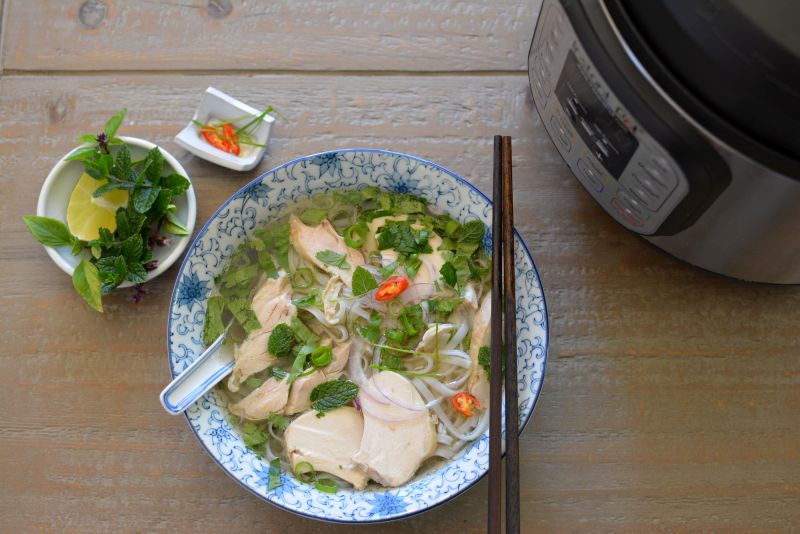
Excellent old-school pho requires a long simmer in a stockpot. Much of that work is passive cooking but it is a half-day project for a home cook. How can you make good, from-scratch pho fast? Use a pressure cooker. They’re called nồi áp xuất in Vietnamese. I’ve seen them online for purchase in Vietnam but the price for a high-end one is roughly 2.2 million dong, or 94 USD. That’s a lot of dough for the average Vietnamese household.
For American cooks, that’s not a huge spend, especially when you can get your hands on an Instant Pot multicooker for roughly that much, delivered to your door by Amazon! I’m sure prices will drop for Black Friday, too.
I own two regular stovetop pressure cookers (the Fagor Duo), and one Instant Pot (IP). The 6-quart IP came into my life after The Pho Cookbook was published so I didn’t try making pho with it until a few months ago. As you know from my column in Cooking Light and through posts like this one, I was skeptical. But the IP has its merits and many people own it.
The IP is a pressure cooker but it’s not like its stovetop kin. For making pho, how does my 6-quart IP compare with my 6-quart Fagor Duo?
Instant Pot (+): You program it then let the IP take over. It’s commonly referred to as “set-it-and-forget-it” cooking. That convenience means there is no need to monitor and regulate the pressure like with a stovetop cooker. The IP does not vent so it’s quiet (a bit eerie for a pressure cooker but I quickly got used to it).
Instant Pot (-): Figuring out how to effectively work the various buttons takes time; it’s not like turning on a stove burner. Additionally, the IP takes much longer to depressurize naturally because the machine stays hot; you can hasten cooling but that’s hard to do when the IP is full of hot pho broth.
Fagor Duo (+): Is low-tech for a high-tech kind of cooking. It works on any stove and you can adjust the heat easily. After cooking you slide the FD to a cool burner to depressurize. Compared to the IP, that means the FD depressurizes faster.
Fagor Duo (-): You have to monitor the pressure during cooking (no leaving the house for a walk). There is venting during cooking so the FD makes a shoosh sound as it operates.
Toasting Spices and Searing Aromatics in the Instant Pot
Appliance cooking is only good when you know your appliance well enough to manipulate it with little hacks. Prepping the spices and aromatics was easy to do in the Instant Pot. You simply use the Saute and More functions to get the pot hot. I typically program the IP and then toss in the spices. When I smell them, I stir things around, letting things get very fragrant before adding the ginger and onion. The aromatics don't get the same kind of occasional browning as in the stovetop pressure cooker but it works just fine in the IP to prep these ingredients this way. You can always opt to use a pan on the stove but I think it does not make a huge difference.
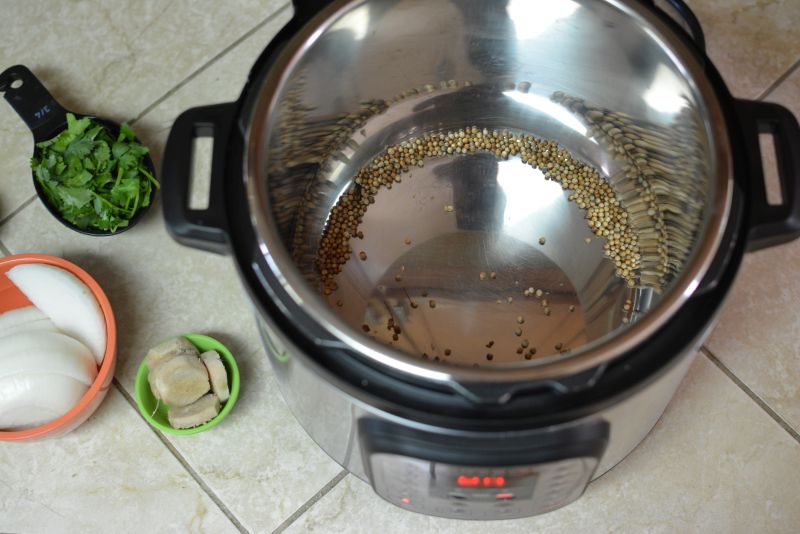
Pressure Cooking’s ⅔ Rule and the Instant Pot
The IP is quirky and miscommunicates how far you can fill the pot. There’s a ⅔ rule in pressuring cooking that says you should not fill the pot more than two-thirds of its capacity. For thick foods such as beans or oatmeal, filling a cooker beyond ⅔ may result in the lid popping off.
There is a “Max” line in the IP’s inner pot that corresponds to 5 quarts. I can do simple math. My Instant Pot is a 6-quart one so I should not fill it beyond 4-quarts. Admittedly, I have pushed the pot to 4 ½ quarts with no problem with the machine failing or accidents happening. Let’s say I hover around 4-quarts.
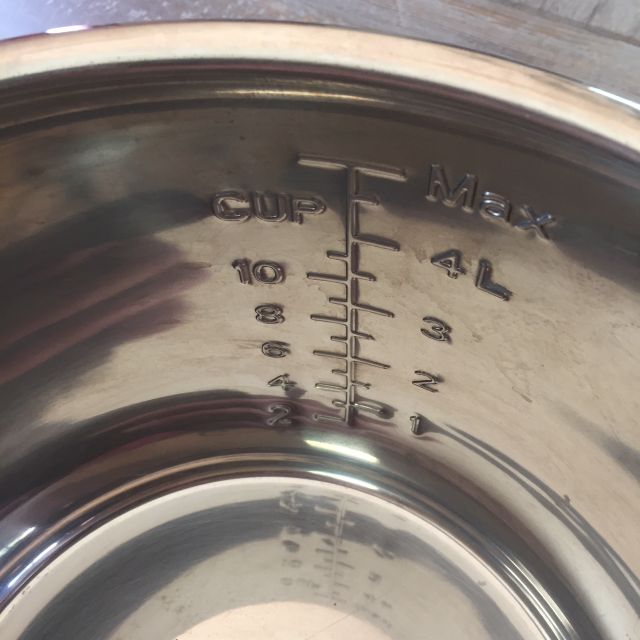
When making pho, I typically used 8 cups water. The IP does not vent like a regular stovetop cooker so there is no loss of liquid. A pressure cooker typically expels flavor and liquid from pho ingredients so that what I put into the pot in terms of water is the same amount that I get from it.
One my first rounds of pho using my regular pressure cooker ingredient quantities, my broth yield was like 9 cups. It wasn’t a bonus because the flavor wasn’t as deep as usual. The venting that happens in a regular stovetop pressure cooker like the Fagor Duo means that there’s also concentration of flavor. Of course, I can boil down the broth. But was there a better way?
My solution: use less water for IP pho. That gets me closer to my desired broth yield of 8 cups for a 6-quart cooker. If my broth yield is less, I can always add back water.
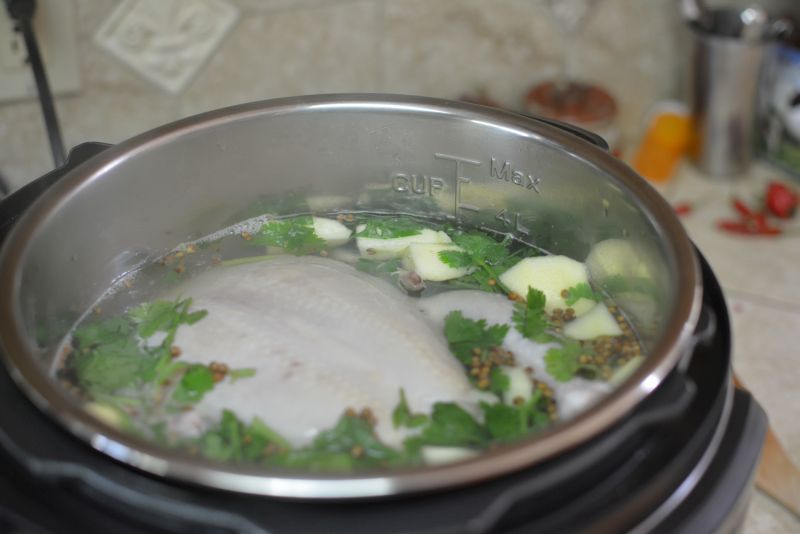
How to deal with the IP’s long depressurization time?
Adjusting the water amount was easy. The bigger problem was with the lengthy depressurization. Things keep cooking during depressurization and when making pho, you do not want to overcook the meat to fork tenderness because then you cannot prettily slice it for the toppings! For many people, that’s not an issue but I’m picky.
To cheat the IP and to make Instant Pot pho that met my standards, I kickstarted the cooking process with just-boiled water. My electric water kettle is the best investment I have ever made, though I'm thinking of getting a bigger unit like this one. I brought water to a boil, let the bubbling action subside before pouring it into the IP. I kept the IP on Saute and More while I heated up more water. I poured in a total of 7 to 7 ½ cups of water, just to barely graze the top of the breast.
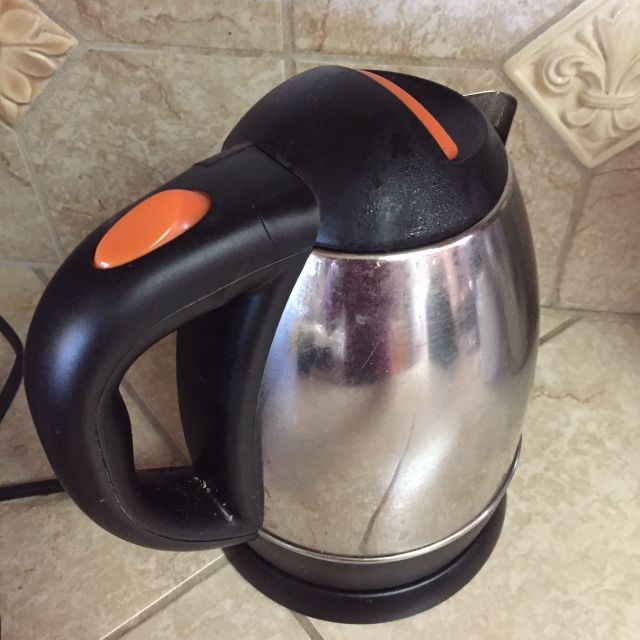
The IP got up to pressure faster so I was sort of tricking the machine to cut cooking time at the front end. (There are recipes that say not to start a traditional stockpot broth with hot water but I’ve had no problem with it in the IP.)
With the front end of cooking shorter, I needed to curtail the back end, too. The final thing I did was this: after the IP finished and beeped, I unplugged it. Walking away and leaving the machine on, meant the pho was left on a “warm” setting. The pot remained hot for a longer period of time so depressurization was took a super long time. I tried turning the machine off with its power button but it was sitting idle and sucking up electricity. That seemed ridiculous.
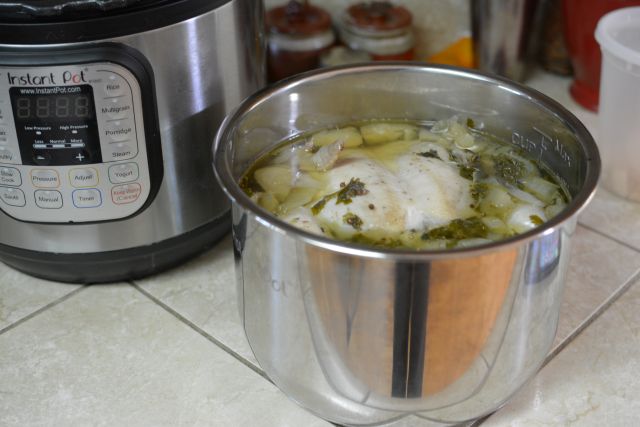
Unplugging the IP after a batch of chicken pho was done allowed the machine to naturally depressurize in a little over 20 minutes – just like the stovetop Fagor Duo. For my other pho recipes that are cooked on high pressure, I let the IP naturally depressurize for about 30 minutes before trying to manually depressurize.
To recap, you can totally use the Instant Pot with my pressure cooker pho recipes in The Pho Cookbook and get fine results. However, three simple tweaks made the IP version really great.
There are about half a dozen pressure cooker recipes in The Pho Cookbook. Try these three adjustments when you’re using the Instant Pot for those recipes:
- Using ½ to 1 cup less water than normal. Make sure the water you add covers the ingredients (strategically arrange them if needed). Add back water if needed to get the final yield, roughly 8 cups. A little more is fine!
- Adding very hot, just-boiled water when you’re doing step 1. An electric kettle is super helpful.
- Unplugging the Instant Pot when it’s done cooking. Let it depressurize for naturally for 20 to 30 minutes. If you have to, manually depressurize but if things violently spew from the valve, return it to the closed/seal position and let it depressurize further. Some gentle whooshing is fine from the valve if the IP is at the end of its depressurization phase. You can put a cold wet washcloth on the IP lid to cool it quicker but I've found with pho, that trick has a marginal impact.
The method outlined above means you can’t set it and forget it. However, you’ll have Instant Pot Pho in about 1 ½ hours from start to finish. Now that you have these hacks in your back pocket, see them in action in my Instant Pot Chicken Pho recipe!
P.S. In case you missed this, I was featured on the Second Wave podcast about pho and its meaning to Vietnamese culture and identity. Second Wave airs on NPR and the host is Vietnamese-American broadcast journalist Thanh Tan (her other job is with the upper echelons at Microsoft).
Related posts:


















Peter says
Just wondering which setting you use on the IP? Soup? Stew? And which heat setting and for how long? I've made the Pho Ga in the IP about 8-10 times and had pretty good results using both Soup and Stew on medium heat for 11-14 minutes.
As an aside, before I read this I was adding water almost to the fill line because I was using backs and feet which really filled up the pot. Only had a problem once when a coriander seed got stuck in the vent and the thing was shooting steam when I came back to the kitchen. I've got a batch going right now with the proper amount of water. i'm expecting even better results.
Andrea Nguyen says
Hi Peter! I use the regular pressure cooker setting. The Instant Pot Chicken Pho recipe is here: https://www.vietworldkitchen.com/blog/2017/11/instant-pot-chicken-pho-recipe.html
Nancy says
Hello Andrea! I love your recipes and how you explain things in such simple terms. Could I use the same tips above for beef pho in the IP? Thanks!
Andrea Nguyen says
Yes, they're tailored for the pressure cooker recipes in my book, The Pho Cookbook! Go ahead and apply those tips to the recipes.